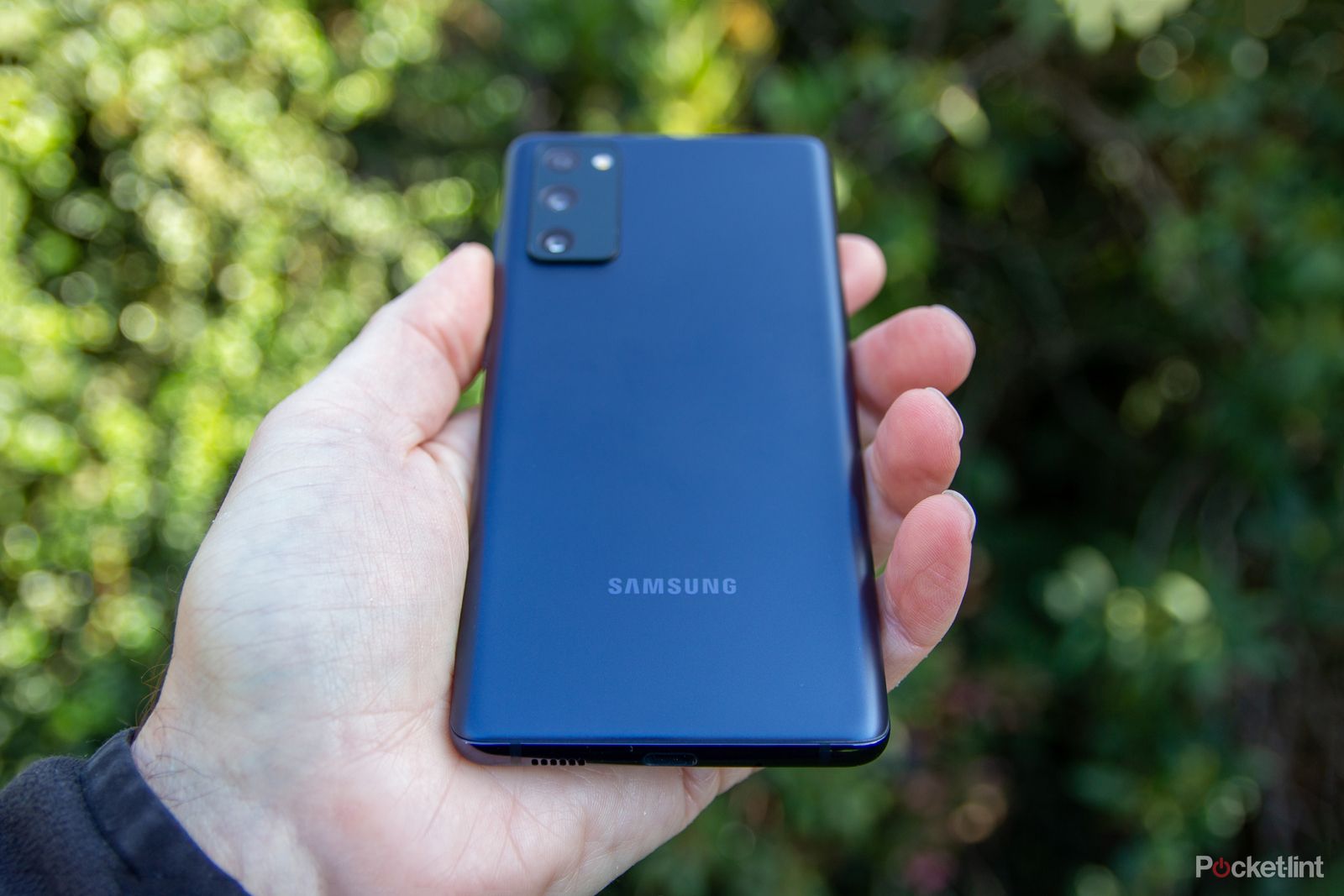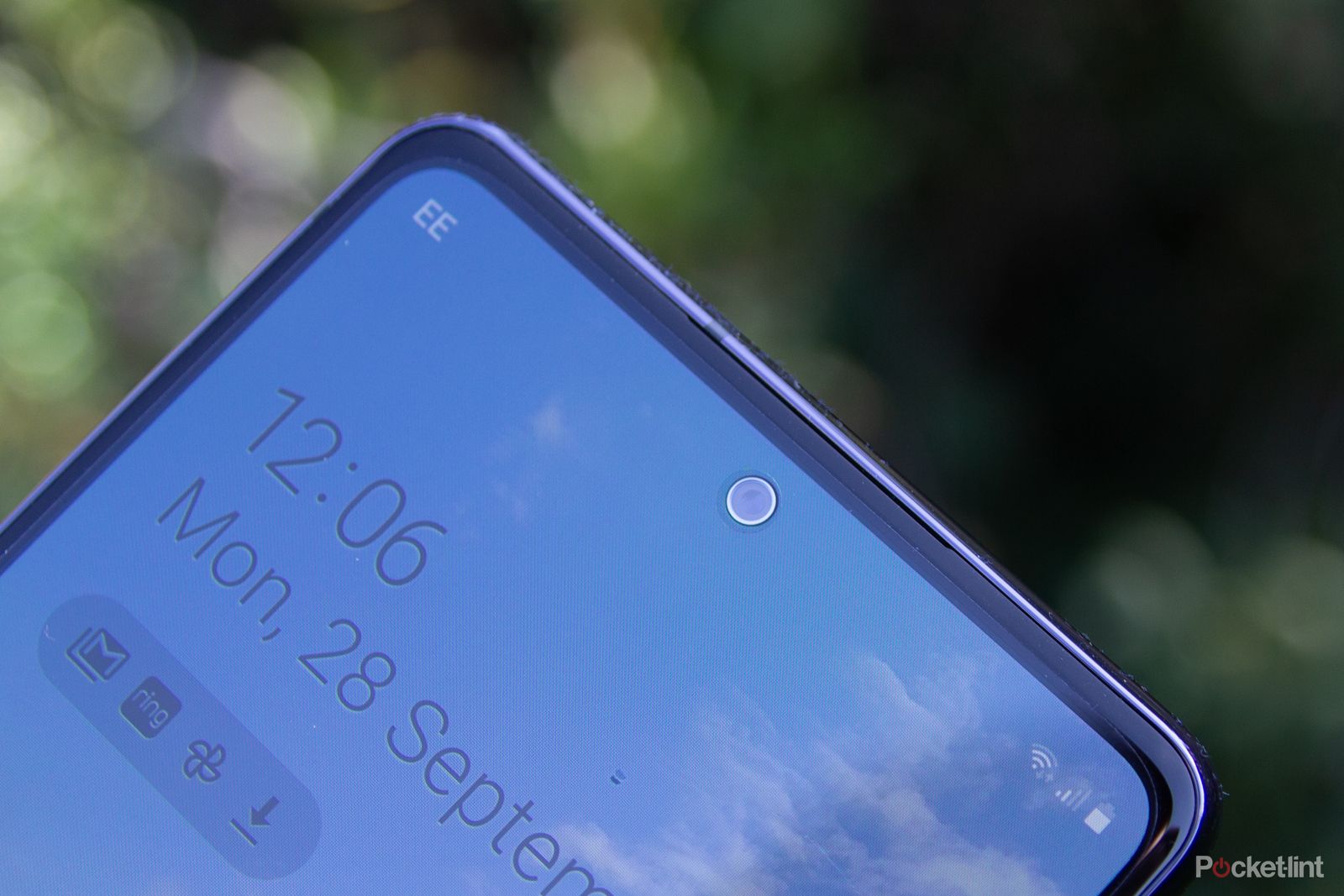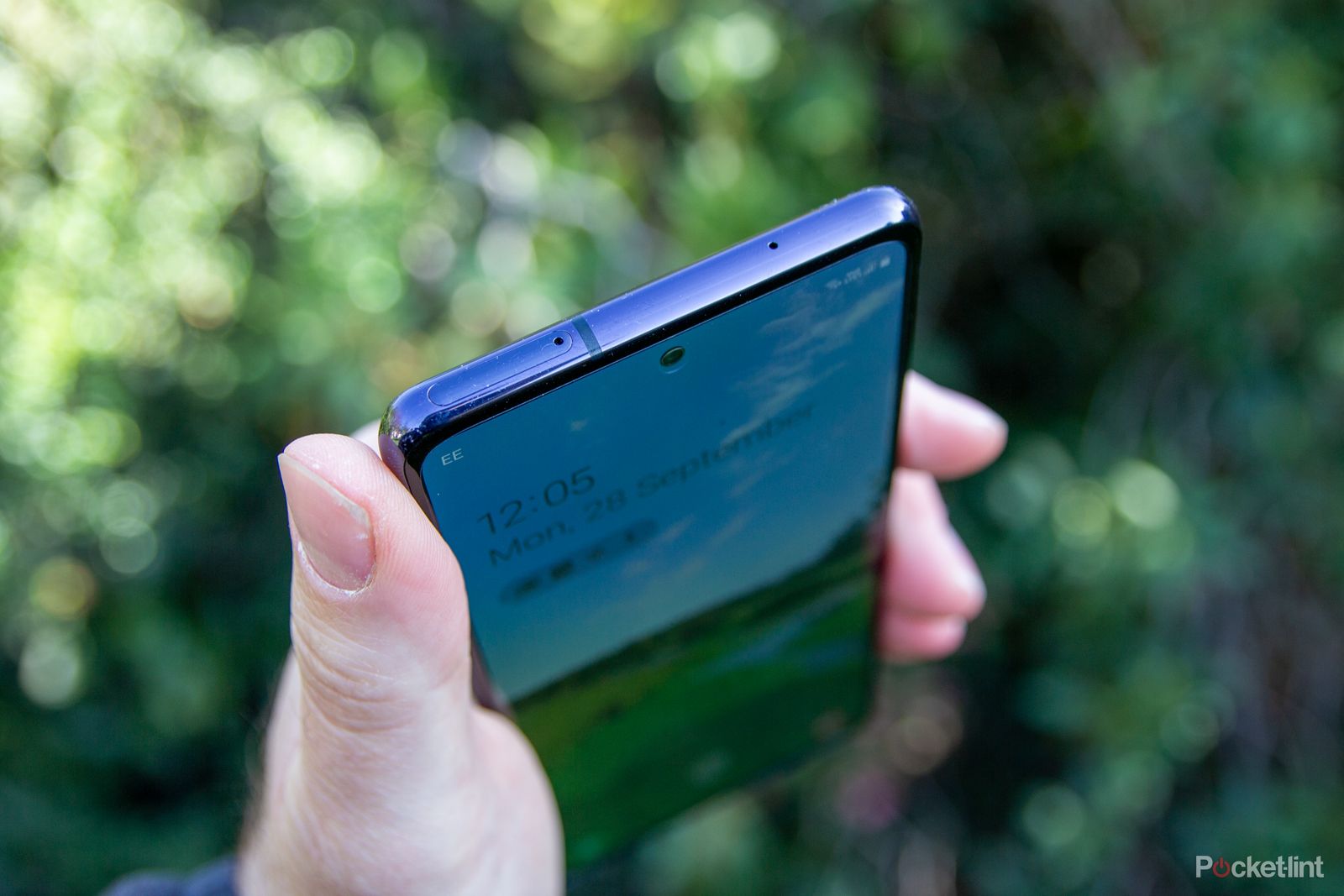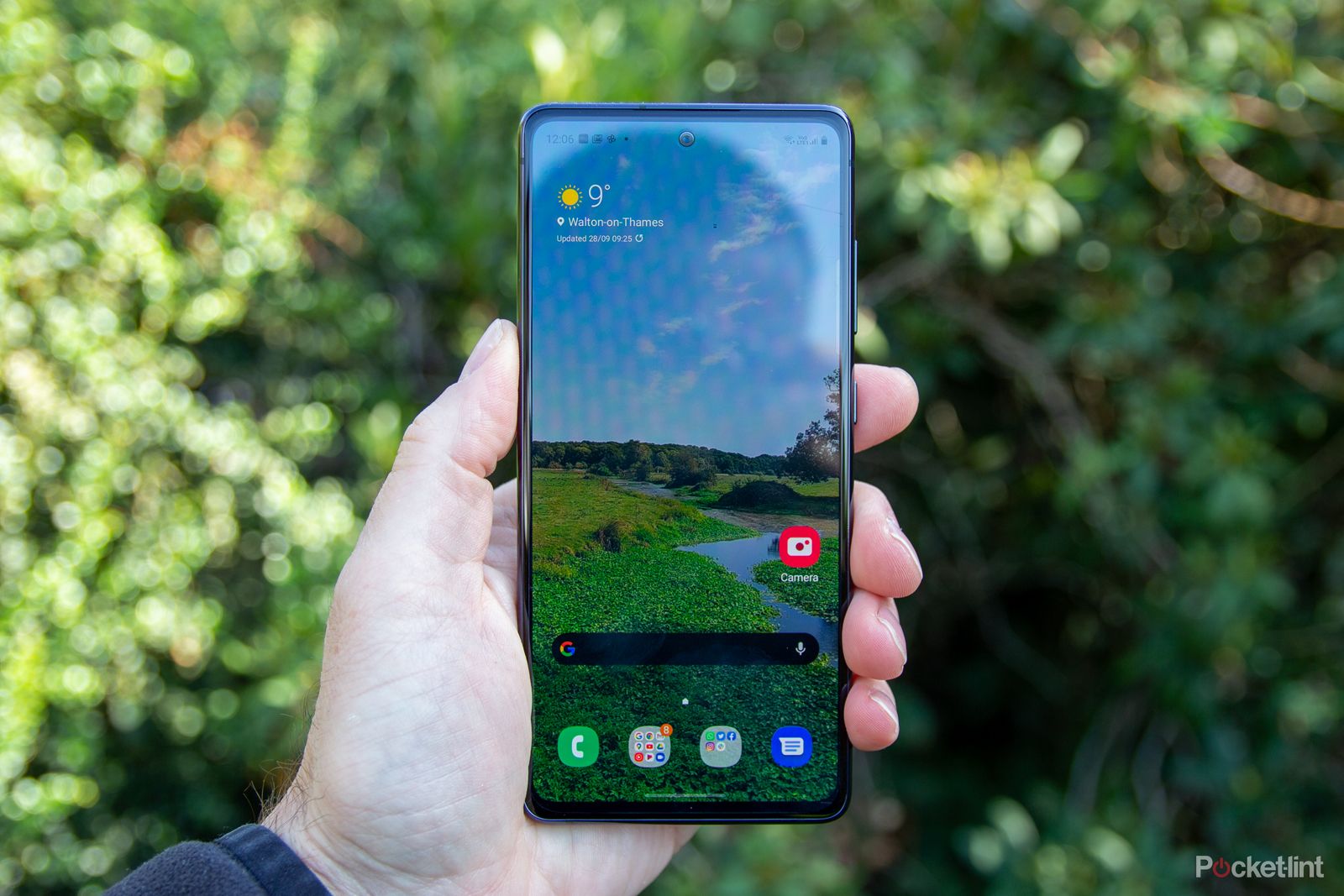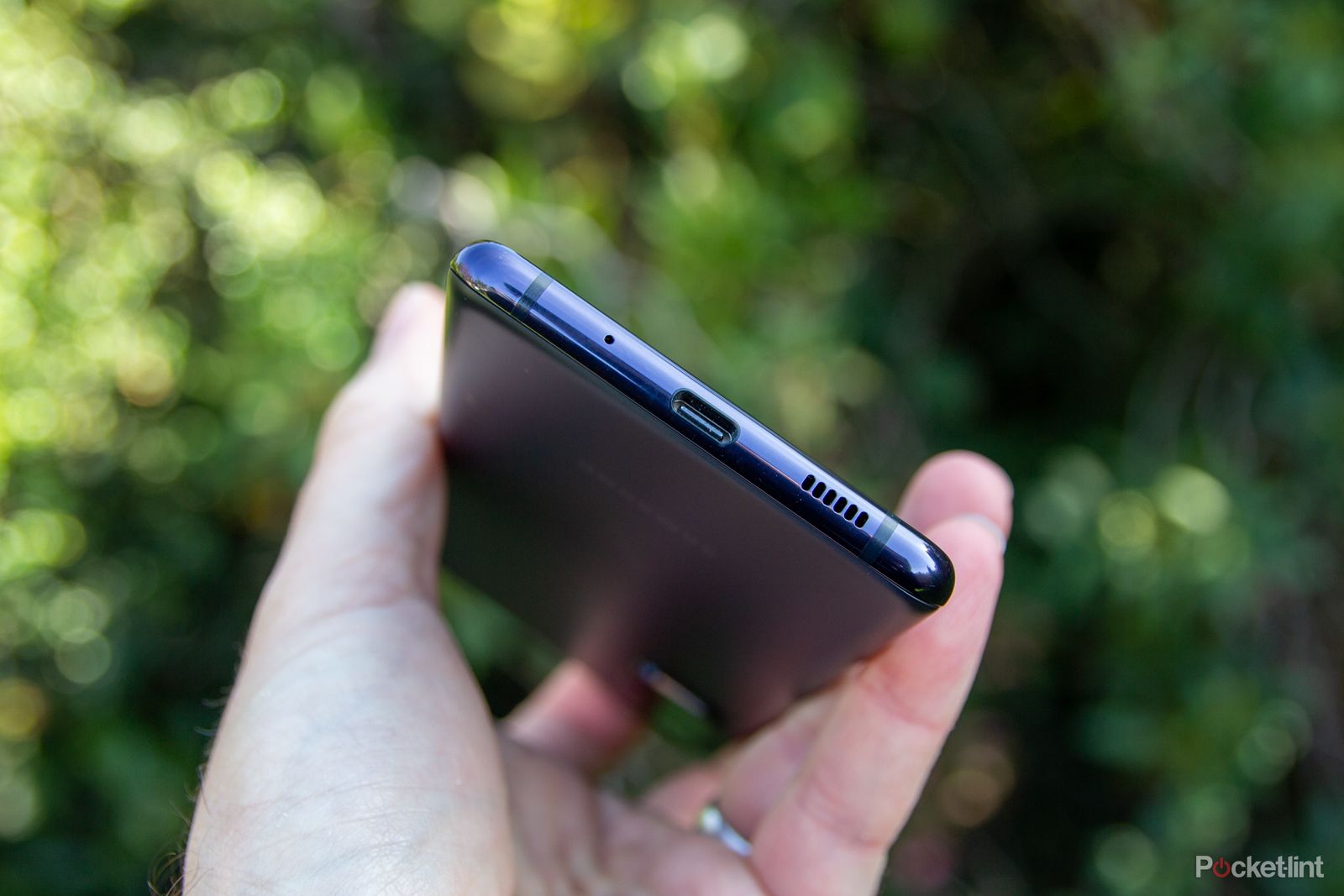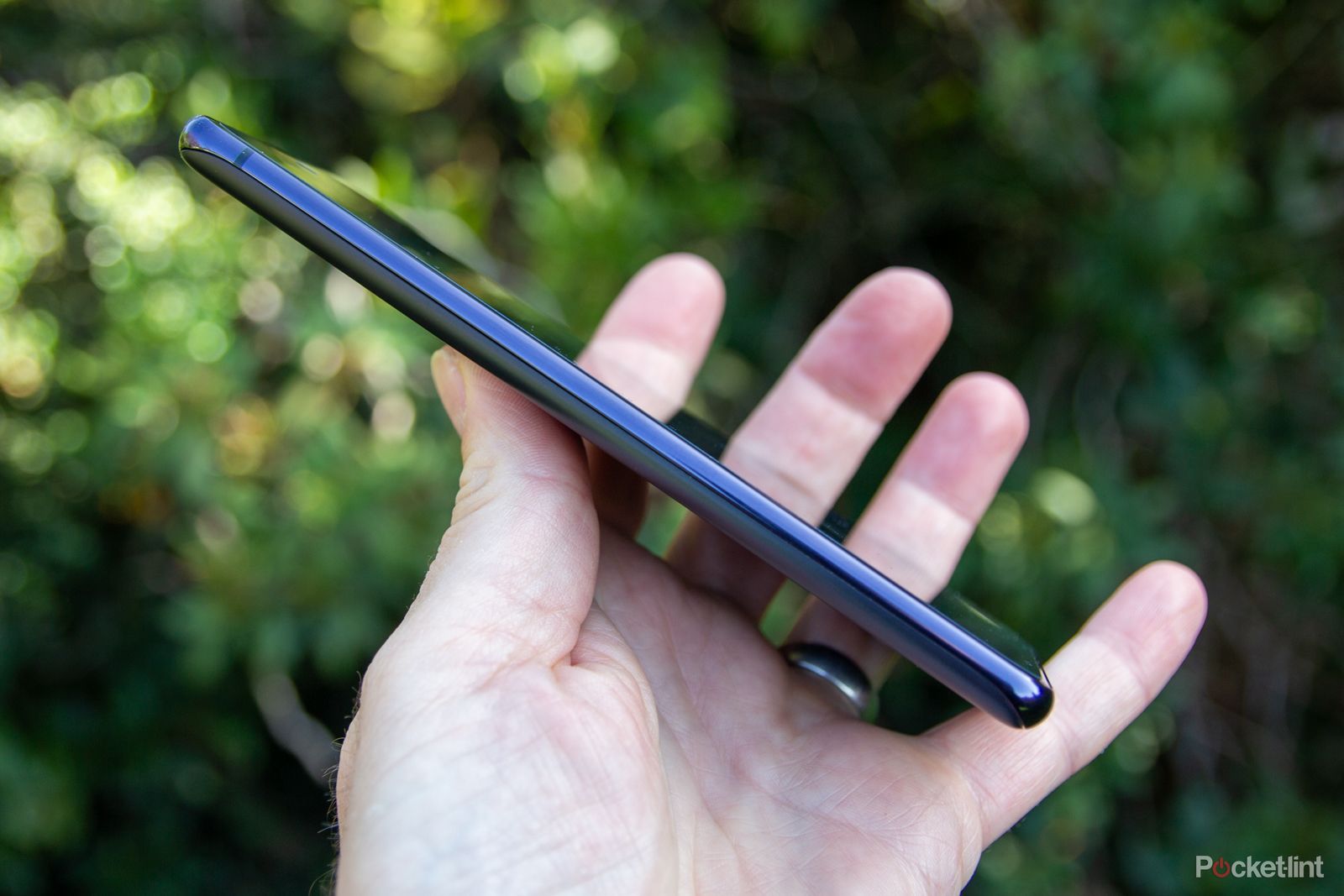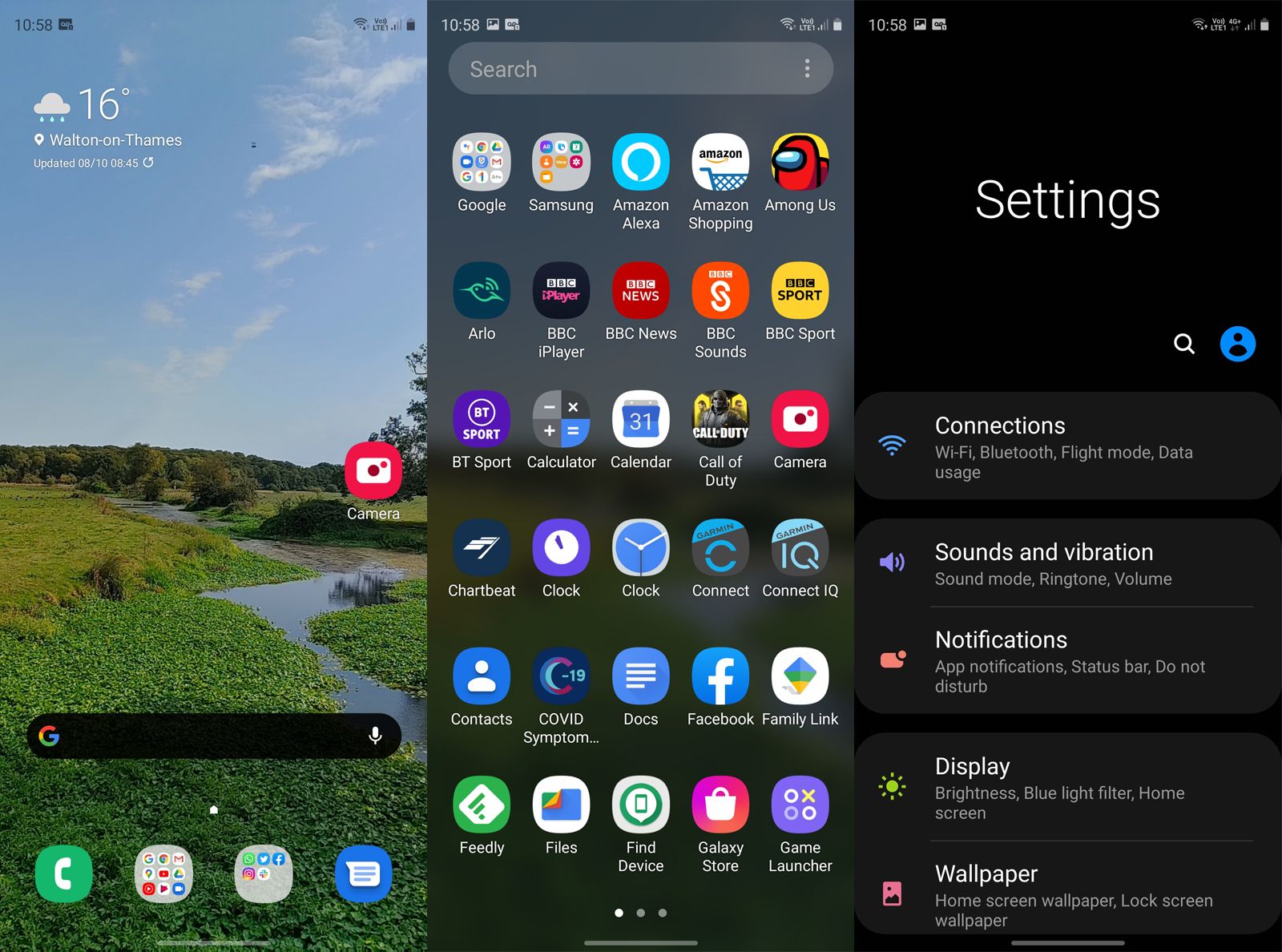The final version of the Galaxy S20 to launch in 2020 was designed to offer the fans what they wanted. That's behind the name - Samsung Galaxy S20 FE, or Fan Edition - while strategically, it gave Samsung another roll of the S20 dice, to try and attract those who didn't take a bite of the apple the first time around.
Make no mistake, this is a flagship phone that's been pulled back slightly to land at a much more appealing price - and that makes this a winning Samsung Galaxy phone. Indeed, it makes it a winning flagship choice - whether you're a Samsung fan or new to the brand.
Samsung Galaxy S20 FE 5G - 128GB (Blue)
Our quick take
Back when the Galaxy S10 Lite launched it raised the question about what Samsung was trying to achieve with its sub-tier flagship devices. That phone was anything but "lite" and very respectable. The S20 Fan Edition seems to be the new change of direction that's easier to understand: a device that retains the flagship essentials, while making a few calculated moves to reduce the price.
The S20 FE's overall spec - ignoring the storm-in-a-teacup Glasstic rear - stands the phone in good stead against many rivals. Sure, there are cheaper phones using the lower-spec Snapdragon 765 platform that are very good, but the Galaxy feels like a phone designed to draw you towards something a little higher-end. We're drawn in, so it succeeds on that front.
So will the Fan Edition cannibalise the full-fat S20 and S21 models? There's a good chance that it will. It's free from gimmicks, it appears to hit all the right notes, and for us it's the pick of the bunch.
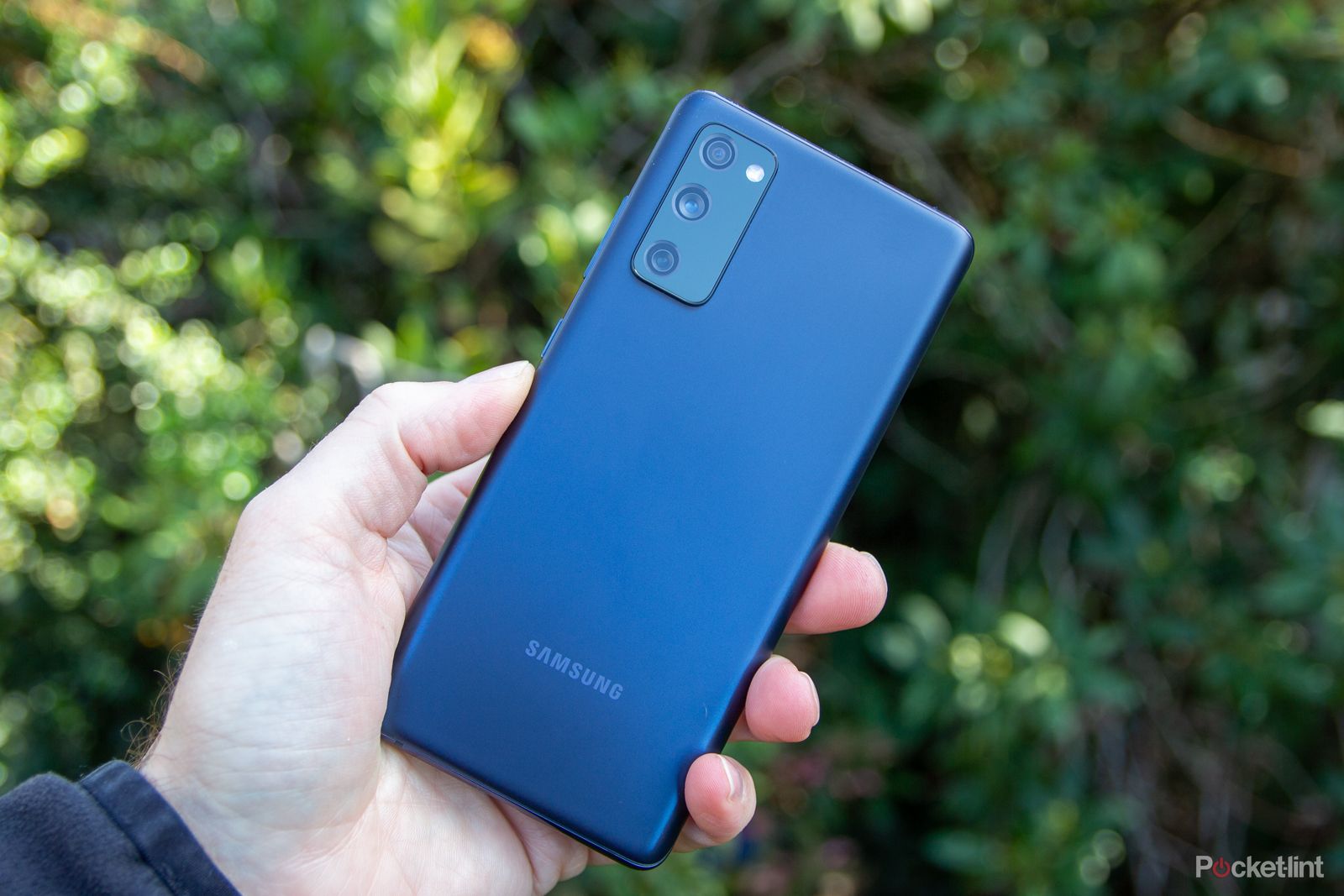
Samsung Galaxy S20 FE - 4.5 / 5
| FOR | AGAINST |
|---|---|
|
|
Samsung Galaxy S20 FE 5G - 128GB (Blue)
Let's talk about the 'Glasstic' design
- Six colours: Cloud Navy / Lavender / Mint / Red / White / Orange
- Dimensions: 74.5 x 159.8 x 8.4mm / Weight: 190g
- Plastic back (AKA 'Glasstic')
- IP68 waterproof
A lot is said about the switch from glass to plastic - what Samsung calls Glasstic. There's a seam of criticism that's outspoken on social media about what constitutes premium and what doesn't. For the Galaxy Note 20, a lot of people - presumably who had never seen the phone, let alone held it - dismissed it as wrong because it was plastic, not glass.
That's a hard position to take, in reality, because the durability of plastic is so good. Cutting the number of glass surfaces in half means there's less to smash for starters. And having now lived with the Samsung Galaxy S20 FE for a couple of months, it's easy to see the materials debate as a storm in a teacup.
The Glasstic back is warmer to the touch, it feels softer, it has a matte finish, and it's a lot easier to keep clean. There's barely a smudge or smear on the thing, unlike the glass back of so many other phones. It's cheaper, sure, but the phone is cheaper too (unlike the Samsung Note 20, which is where this controversy started, or the Galaxy S21+ the latest plastic-backed phone from Samsung).
But importantly the fit, finish, look and feel of the Galaxy S20 FE isn't cheap. In fact, we prefer it, along with that assurance that if we do drop it, we're unlikely to see a catastrophic shattering of the back of the phone. Yes, we've broken plenty of glass phones in our time.
The other big thing you'll notice from a design point of view is that the display is flat. That makes the bezels more visible, but they're actually very neat. It's slightly strange that the punch hole camera seems to have a reflective ring around it; it doesn't look deliberate, but it certainly catches the eye and that means it doesn't blend in quite as well as some do. In reality, that doesn't matter - we've not noticed it much when using the phone day-to-day, so we're happy to set it aside as a peculiar quirk.
Otherwise the Galaxy S20 FE is very much an execution of Samsung design, wrapped in a package with IP68 protection - meaning it's waterproof to 1.5m deep for up to half and hour. It's great to have protection at this level, as it's usually the preserve of the most expensive phones.
Display
- 6.5-inch AMOLED panel, 120Hz refresh rate, 2400 x 1080 resolution
- Under display fingerprint sensor
Samsung is known for its display panels and the S20 FE doesn't disappoint. With the curved edges gone, there's perhaps slightly less wow factor to this phone. But at the same time it avoids the downsides of curved screens - namely that they can introduce phantom touches around the edges or that the extreme edges are less responsive.
That's something we've noticed in games in the past - and having put the S20 FE through many hours of Call of Duty Mobile, we're actually very happy with it. The size, too, is great, because it feels like this is the sweet spot for us, remaining manageable while giving content enough space to shine.
It's a Full HD+ display with a 120Hz refresh rate, designed to reduce blur in fast motion. That can be particularly important in games and there's a growing list of titles that support faster refresh rates, from the likes of Real Racing 3, through to the forthcoming Call of Duty Mobile update.
Whether that makes a difference to you will depend on a lot of things - how much time you spend gaming, how keen your eyes are, how much you spend fast scrolling through information-dense apps - but in many cases, the celebration of faster refresh rates is a little misguided, with many confusing software optimisation and hardware performance. Bad software or a slow user interface (UI) is still just as bad at 120Hz.
Look for that 120Hz smoothness and you'll find it, but Samsung still gives you the option to switch back to 60Hz, which potentially reduces battery drain as the display isn't working as hard. For this review we've left the phone at 120Hz because the drain on the battery hasn't been a concern. There's no adaptive option like there is on the Galaxy S21 models, a minor point of distinction.
As with all Samsung devices, the brightness and pop to the display really makes a difference. Moving to this phone from a mid-range phone - albeit a good mid-range one - the Nokia 8.3 - and there's still a quality difference here between Samsung panels and some alternatives.
The vibrancy of the colours is a delight, bringing a richness to your content so things just look better than on other devices. You can alter the saturation if you find it too rich, but we also really like the fact that the Samsung One UI will let you turn off adaptive brightness from the slider, meaning it's really easy to switch off auto-brightness when you don't want it - such as when gaming - and switch it back on again when you do, for when it gets dark.
The richness of the display can crush some darker tones though. While the deep blacks are impressive - and a signature look of AMOLED displays - than can mean that shadow detail on movies can vanish, so you might have to pump the brightness up a little.
There's also one minor thing that might impact on those with polarised sunglasses: the screen dims radically in portrait orientation. But it's not a complete blackout, so it's shouldn't be a huge issue come summertime.
Hardware and specs
- Qualcomm Snapdragon 865 processor
- 6GB RAM, 128GB storage
- 4500mAh battery
- 5G connectivity
Before we talk about the hardware, let's talk about the fingerprint scanner. This is an optical scanner rather than the ultrasonic scanner that Samsung uses in its higher-spec S20 devices. And we can tell the difference. We've found it less reliable and slower to unlock that some other implementations and it feels like a step-down from the other S20 models.
Having used some old school rear-mounted fingerprint scanners recently - which are blisteringly fast - this under-display scanner feels a little slower. Having had some fails we recorded the same thumbprint again and that seemed to make it a little better. It's not a huge issue, but it's just not the slickest out there.
What does stand-out is that this is a Qualcomm Snapdragon 865 Samsung phone - something that's a rarity in the UK and Europe for Samsung Galaxy devices, which are usually Exynos powered. That was part of the reasoning behind this FE device, as globally, the 5G version is Snapdragon 865. It's paired with 6GB RAM, slightly less than the Galaxy S20 models, but so far we've not noticed that to make any real difference.
That's a key thing to look out for on this phone, however, as the 4G version (if the 4G version is available in your market, which it is in Europe), will be the Exynos 990 version. Just make sure you know what you're buying and what you want from it. The Qualcomm vs Exynos debate is one that's been raging amongst Samsung fans for many years. In reality, the difference - from prospective power, to a purported faster draining of battery on Exynos - is likely only slight and in most situations, you'd have no idea what was powering your phone unless someone told you.
That said, having closely followed Qualcomm's developments over the past few years and used a good number of Snapdragon 865 devices in 2020, we've been universally impressed by the S20 FE's performance. Importantly, it gives you a more direct comparison to other devices you might be looking at. Companies like OnePlus and Xiaomi offer aggressively-priced Snapdragon 865 devices - and now Samsung feels a little more competitive in this space too.
The performance really speaks for itself. There's speed and snap to everything and we've found this a great phone for gaming, because it can cope with the demands that some modern games are stating to put on phones. We'd seen a little slowdown in the last-generation of flagship devices when playing games like Call of Duty Mobile (especially Shipment 1944, which can be really busy) and Snapdragon 865 copes with this better - so the Samsung Galaxy S20 FE copes better.
The 128GB storage is pretty standard and the support for up to 1TB extra via microSD means that future expansion is open to you - storage basically won't be a worry. There's no sense that Samsung is trying to leverage storage to pump up the price - as you'll find on the iPhone.
The S20 FE's battery capacity, at 4,500mAh, is reasonable - the same as the Galaxy S20+ that this phone directly rivals - and we've found it to get through days without a problem. Throw in a couple of hours of hardcore gaming and you'll be needing that charger towards the end of the day, but overall, this phone feels like it benefits from the hardware changes made for the FE to give better endurance.
It's worth noting too that it's only really the older hardware that separates the S20 FE from the newer Galaxy S21+ - and given the price difference, the Galaxy S20 FE really does hold its own.
We also need to give a word over to sound quality. There's no 3.5mm headphone socket, there's no adapter in the box for USB-C to 3.5mm either, but it is equipped with excellent speakers. These support Dolby Atmos, in that you can toggle on a virtualised wider sound stage to make things sound better, and there's enough volume to really make the phone sing. We've even had people across the room ask with surprise if it's the phone producing that sound. It's great for YouTube, it's great for gaming - it just sounds great thanks to the AKG-tuned stereo speakers.
Cameras
-
Triple rear camera setiup:
- Main: 12-megapixel, 1.8µm pixel size, f/1.8 aperture, optical image stabilisation (OIS)
- Telephoto (3x): 8MP, 1.0µm, f/2.4, OIS
- Ultra-wide: 12MP, 1.12µm, f/2.2
- Front: 32MP, 0.8µm, f/2.2 fixed focus
What we like about the camera arrangement on this phone is that there are few gimmicks. There's no unnecessary macro or depth sensor, just three usable, good quality lenses.
The main camera is the same 12-megapixel that we saw on the Galaxy S20 and we were impressed with the performance - which seems to be much the same on the S20 FE. It has the same great high dynamic range (HDR) treatment, meaning photos really have some pop and balance to them.
The main camera is generally a good performer, with plenty of options thrown in, including some smart suggestions to help you get better pictures. If it's dark it will suggest night mode (just as the Google Pixel does), although it will attempt to take pictures in lower light anyway. These are passable, but the night mode is a lot more accomplished, thanks to longer exposure times, so you'll get a cleaner shot. Night mode is also available across cameras - it can be used on the ultra-wide (although the results are poor), when zooming (although it's limited to 10x digital zoom), as well as on the front camera.
The main camera is joined by a ultra-wide camera and telephoto, both very usable, but spec spotters will notice that the telephoto here is just 8-megapixels, rather than 64-megapixels as on the S20 models. That's where the cost savings come in. On those Galaxy models launched earlier, the 64-megapixel sensor was also used to capture 8K video, which the S20 FE can't offer at this resolution. As it sticks to 4K, that video is captured through the main camera instead, with 4K/60fps the top option. There's also an experimental HDR10+ video capture mode, although that's only available up to 4K/30fps.
The ultra-wide camera is always popular, able to capture shots that squeeze lots into the frame easily, which is ideal for the great outdoors. This can be a little blurry towards the edges of the frame, but generally it's a fun lens, especially if you have good bright conditions.
The telephoto lens offers Samsung's 30x Space Zoom, wanting to keep up with the other S20 models. Here it has a 3x optical lens that then gives 10x digital zoom to hit that headline figure. It's stabilised and you can get usable shots from it, but the quality drops off rapidly. The 3x shots are pretty good, but at 10x zoom it's losing grip - and by the time you get to 30x zoom it's more like a watercolour painting.
Samsung plays a little trick in lower light, using the main camera for zoom out to 10x to try and deliver better quality from the larger sensor and wider aperture, before switching to the telephoto for the end of the range (which isn't great). If it's really dark, i.e. night time, it doesn't use the telephoto lens at all - it just stops at 10x digital zoom.
The front camera is reasonable too, but not hugely impressive. In daylight conditions you'll get a good selfie from it, and there's fun options for bokeh with effects, but as soon as the light dips you'll find image noise is more present. Indoor shots will see shadow noise and here it can't compete with some rivals - the Google Pixel beats it in our opinion (although admittedly there's a harsher styling to Google's selfies) - although supporting night mode is also useful and can make a noticable difference.
We question the use of a 32-megapixel sensor, which is used for pixel combining for better lower-resolution quality, and we suspect this is behind the fairly poor dynamic range of the selfie camera. But it does have one trick: switching views when it detects a larger group. This means it can take a wider selfie - and the files are actually different, moving from a 6.5-megapixel (average) to 10-megapixel for the wide - suggesting the pixel combining it's using is different. You can also take 32-megapixel selfies if you want - although why you'd want to, we can't imagine.
The Galaxy S20 FE also keep pace with the S21 and S21+. While it doesn't offer 8K video capture, the photo performance is very much the same as those newer models - although the S21 Ultra sits a clear level above.
Samsung Galaxy S20 FE 5G - 128GB (Blue)
To recap
Free from gimmicks, the Samsung Galaxy S20 FE appears to hit all the right notes. We think it could well be the pick of the S20 bunch - especially at this price point.

